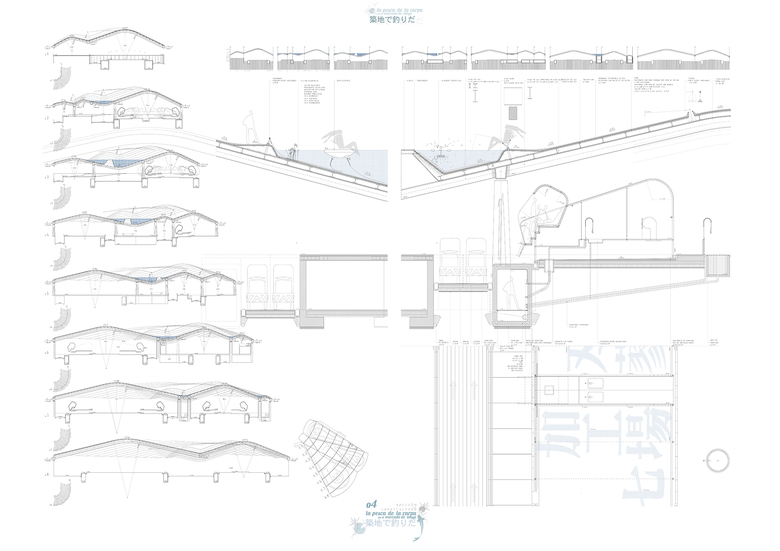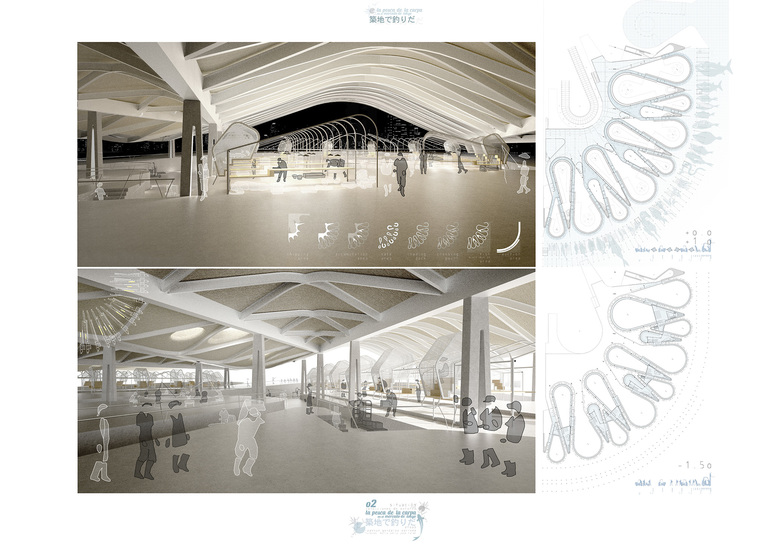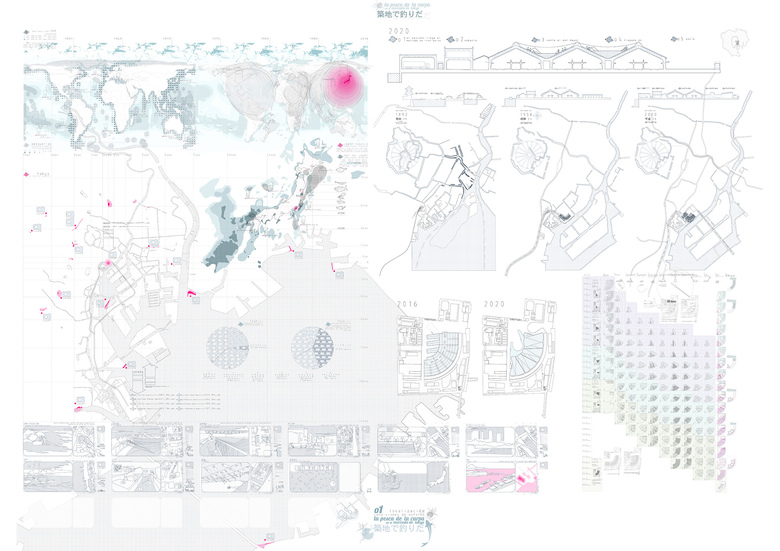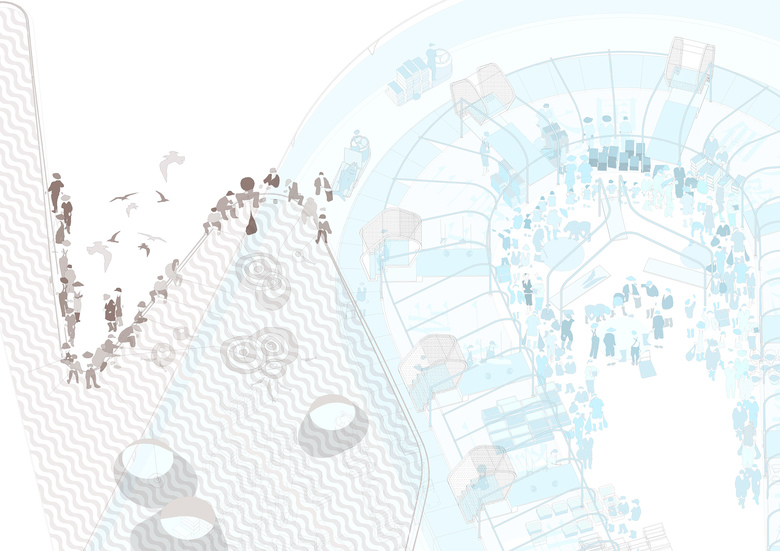Carp Fishing in the market of Tokyo
CARP FISHING IN THE MARKET OF TOKYO
"This project involves replacing the current roof of the fish market of Tokyo, for a roof that is able to contain bodies of water that are held within folds, within which fish are cultivated as well as a fish programme that is capable of bringing production closer to the zone of consumption. This way, the daily use of the market will be increased and intensified."
After reading the thesis of Tsukiji, the Centre of the World by anthropologist T.Bestor, during my stay in Tokyo I was repeatedly drawn to the market, visits that ended up becoming the focus of the project of my degree. The controversial decision of the Metropolitan Government to move the market to Toyosu (man-made islands in the bay) converting it into a big tourist complex, finished with a debate that lasted more than 30 years between different social representatives, who were against this option in favour of the virtues of the current location of the market. As a result, the project sets out how the market could be today, leaving it in its original place, as well as dealing with societal current sensitivities.
When you study Tsukiji , one of the biggest markets in the world, you cannot ignore the global influence that it has. Japan is the world's second largest importer of over-exploited and nearly exhausted oceanic fish stocks, which is resulting in the decline of many marine ecosystems. This project proposal incorporates growing environmental concern as well as reflecting on the need to place the economic sector, bringing production and consumption closer together, in a city where the fish culture can be seen in most daily activities: leisure, public spaces, amenities, restaurants, videogames, mythology, festivals etc.
Many of the fish to be sold, need to be alive before consumption and transported in water tanks in lorries, from the Haneda airport to Tsukiji market. This results in extra energy costs, which are easy to avoid if the fish are actually cultivated in the same market within which they are to be sold. Tokyo has developed a great ability to deal with the shortage of space by superposition of programmes and with this same strategy, the productive cover of the market will be made.
Currently, on the ground floor of the market, pedestrians and workers' motorised vehicles move alongside one another, which results in a risk of accidents, and this is apparent in the warning signs that are in place around the market. The project takes this problem and solves it with different micro-topographies, such as making a channel that lets the two paths run alongside one another without crossing as well as facilitating loading and unloading at the market stalls.
The two worlds, that of fishing and that of commerce, come together through the structure of this project, composed of a sequence of membranes made out of crossed arched beams that are fixed to main beams, which support any tensions. The main beams lie on the extruded topography of the floor and these pillars are spaced as the distance of the arches become bigger and tensions increase giving space to the connection between both places.






